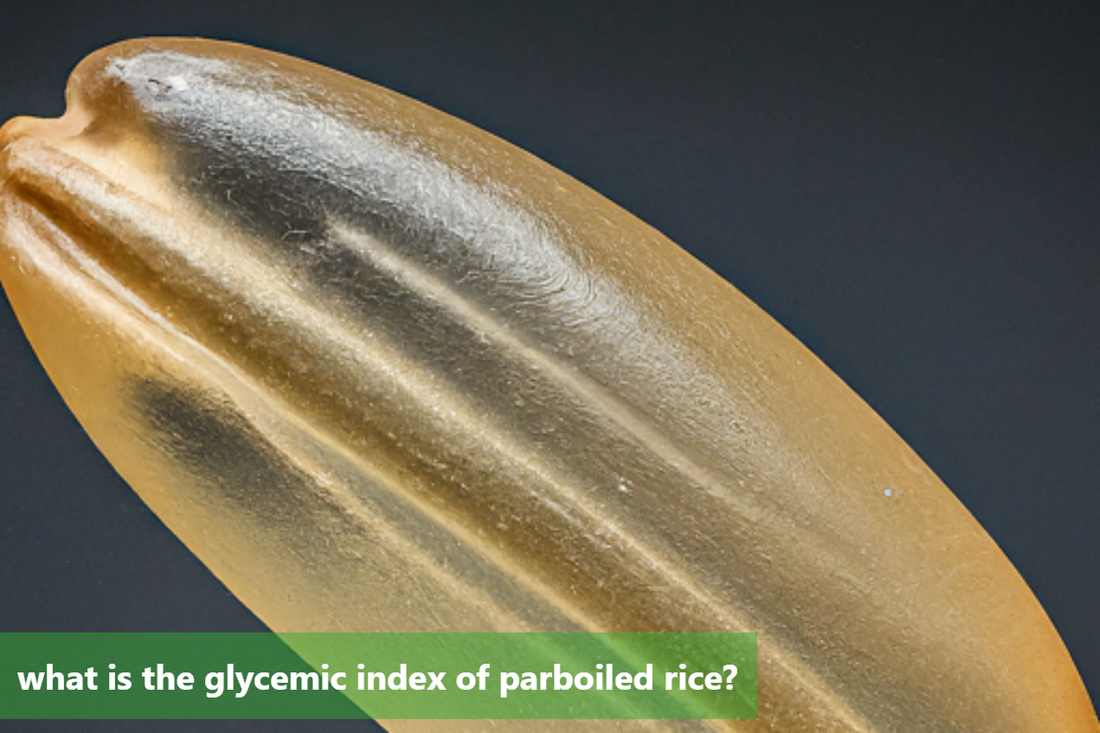Parboiled rice, also known as converted rice, undergoes a special processing technique that involves soaking, steaming, and drying the rice. This method allows the nutrients to penetrate the endosperm, resulting in a more nutritious final product. One of the primary benefits of parboiled rice is its enhanced nutritional value compared to regular white rice, as the parboiling process helps retain more nutrients. The long-grain variety cooks up fluffy and separate rather than sticky, making it ideal for various rice dishes. The parboiling process also makes the rice less likely to become sticky or overcooked, offering convenience in meal preparation. Additionally, the glycemic index of parboiled rice is lower compared to other types of rice, making it a preferred option for individuals seeking to manage their blood sugar levels, including those with diabetes.
Understanding the Glycemic Index
The glycemic index (GI) measures how quickly a food raises blood sugar levels. High GI foods cause a rapid spike in blood sugar, while low GI foods lead to a steadier rise. Understanding the GI is vital for individuals with diabetes, helping them make informed food choices. Opting for foods with a lower GI, like parboiled rice, can help manage blood sugar levels and reduce sudden spikes, leading to improved overall blood sugar control and reduced diabetes complications. Parboiled rice, with its moderate GI, can aid in sustained energy release and satiety, benefiting overall well-being.
Glycemic Index of Parboiled Rice
Parboiled rice undergoes unique processing involving soaking, steaming, and drying before hulling. This results in a lower glycemic index (50 to 60), making it favorable for blood sugar management. The gelatinization of rice starch during processing alters its digestibility, providing sustained energy release and promoting satiety. Research shows parboiled rice's favorable impact on blood sugar levels, making it an ideal choice for individuals seeking to manage their glycemic response. Incorporating parboiled rice into a balanced diet can support blood sugar management and overall health.
Impact of Parboiled Rice on Blood Sugar
Parboiled rice has a lower glycemic index, making it beneficial for diabetes management and blood sugar control.
The slow digestion of parboiled rice prevents spikes in blood sugar and provides a sustainable source of energy.
Benefits of parboiled rice for individuals with diabetes include improved insulin sensitivity and reduced risk of complications.
The high fiber content in parboiled rice contributes to better blood sugar management by slowing down glucose absorption.
Portion control is essential when consuming parboiled rice to avoid a sudden increase in blood sugar levels.
Consider overall meal composition and food choices when including parboiled rice in a diabetic meal plan for balanced nutrition.
Adding parboiled rice to a well-rounded meal plan with whole grains, lean proteins, and vegetables can help stabilize blood sugar levels.
Bottom Line:
The glycemic index of parboiled rice is crucial for understanding its impact on blood sugar levels. With a moderate glycemic index and high nutritional value, it is suitable for regulating blood sugar levels and providing sustained energy. The fiber content aids in digestion and fullness. Including parboiled rice in a balanced diet can offer both health benefits and culinary versatility.
Say GOODBYE to restrictions on Rice during Diabetes. Introducing Low GI Rice from DiabeSmart - India's 1st Diabetes Foods Brand.
✅Helps Manage Blood Sugar Levels
✅Clinically Tested: GI < 55
✅Cooks & Tastes like Regular White Rice
✅Good for Whole Family
FAQs:
What is the Glycemic Index (GI) of parboiled rice?
The GI of parboiled rice ranges from 50 to 70, making it a low to moderate GI food.
Is parboiled rice a good choice for people with diabetes?
Yes, parboiled rice is a good option for individuals with diabetes as it has a lower GI compared to white rice, which helps in managing blood sugar levels.
How does parboiling affect the GI of rice?
Parboiling rice involves partially boiling the rice in the husk, which alters the starch composition, resulting in a lower GI compared to regular white rice.
Can parboiled rice be a part of a low-GI diet?
Absolutely, parboiled rice is a suitable choice for a low-GI diet due to its moderate glycemic index, providing sustained energy levels without causing rapid spikes in blood sugar.
Are there different varieties of parboiled rice with varying GIs?
Yes, the GI may differ among different varieties of parboiled rice, with some having a lower GI compared to others. Opting for long-grain parboiled rice may offer a lower GI compared to short-grain varieties.
This Blog post is an initiative by DiabeSmart, to provide accurate and Nutritionist / Doctor approved information related to Diabetes. DiabeSmart is India's first Food brand designed specifically for Diabetics, that has been clinically tested on Diabetics and Pre-Diabetics to deliver 55% - 70% lower Sugar spikes. DiabeSmart is part of Lo! Foods - India's leading brand for Everyday Functional Health foods.















